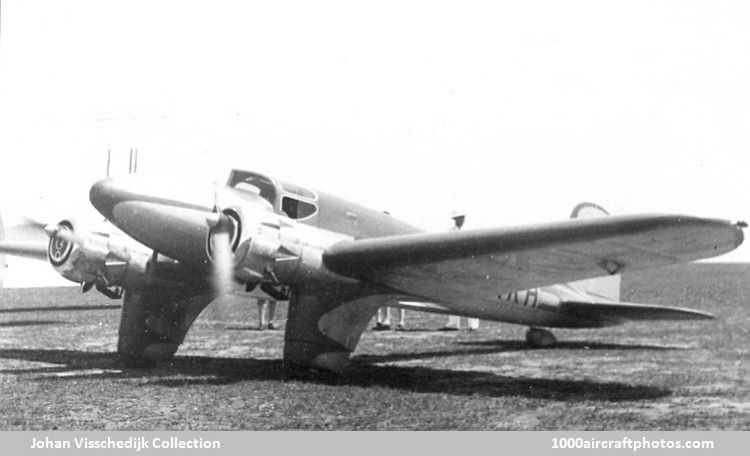Technicians of the LA/KNIL (Luchtvaart Afdeling/Koninklijke Nederlands-Indische Leger, Aviation Department of the Royal Netherlands-Indies Army) constructed the aircraft in parts at their base at Bandoeng (now Jakarta), Java, and it was assembled at Andir Airfield. The first flight was made by First Lieutenant Cornelis Terluin on January 4, 1935, only twenty days later it received its CofA and was registered as PK-KKH.
Khouw was pleased with the aircraft performance and intended to establish an aircraft company in the Dutch East Indies to produce the Walraven designs. To promote this idea, he and Terluin flew the Seletar from Batavia to Schiphol in the Netherlands. From September 16 to 27, 1935, they needed 82 hours flying time to cover the 10,253 mls (16,500 km), the return trip, that was made from November 1 to 12, took only 71 hours.
However, Khouw was killed in a LA/KNIL Martin B-10 that crashed in February 1938 and the production plans did not materialize. The stored at Andir and it was destroyed during the Japanese attack of February 19, 1942."
Engine: Two 90 hp Pobjoy Niagara seven-cylinder radials
Span: 36 ft 1.1 in (11.0 m)
Length: 25 ft 7.1 in (7.8 m)
Height: 7.6 ft (2.15 m)
Wing area: 190.5 sq.ft (17.7 sq.m)
Max speed: 149-155 mph (240-250 kmh)
Cruise speed: 124 mph (200 kmh)
Landing speed: 40-44 mph (64-70 kmh)
Service ceiling: 19,685 ft (6,000 m)
T/O weight: 2,425 lb (1,100 kg)
Empty weight: 1,380 lb (626 kg)
Fuel: 90 gal (340 l)
Range: 994-1,118 mls (1,600-1,800 km)
